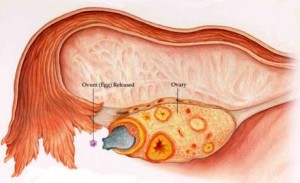Ovulation symptoms | How do I know?
A common question in my fertility acupuncture practice is whether or not there are specific ovulation symptoms and how to know when you ovulating. In other words, when is the best time to try to conceive? The answer is that everyone is subtly different. For some people recognising ovulation symptoms is easier than for others but there are similarities. Most women ovulate 12-14 days before your period starts, regardless of how long or irregular your cycle is due to the influence of the corpus luteum.
The best way, in my opinion, is to get to know your body better. Ovulation kits are convenient and can be accurate but as with many aspects of fertility treatment they can end up disconnecting you from yourself. Remaining connected is important and often overlooked in the often over-medicalised world of modern fertility treatment.
http://news.bbc.co.uk/ovulation pictures
Here are some common ovulation symptoms:
- Increased vaginal secretions
- Breast tenderness
- Bloating
- Mild abdominal pain
- Slightly increased body temperature
- Position of cervix (womb opening) changes
- Increased sex drive
These two are worth a bit more explanation:
1. Vaginal secretions
Fertile cervical mucus is both a clue that ovulation is coming and a useful diagnostic tool about aspects of your fertility. If you can detect when your cervical mucus is most fertile, you can predict ovulation, and time sex accordingly.
As ovulation approaches, you will most likely have more vaginal discharge. This cervical mucus will change from a thick, dry or sticky consistency with a hostile pH and difficult for sperm to swim through, to creamy, then wet, then raw egg white consistency that sperm can survive in and that creates stringy channels for them swim along, directing them towards your womb.
This wet to raw egg consistency is when ovulation is approaching and is present for a couple of days. At this point you are at your most fertile as an egg is about to be released and the cervical mucus will aid the sperm on their way.
How do I check?
1. Wash and dry your hands well. After a shower is a good time.
2. Get yourself into a comfortable position. Sitting on the toilet, squatting, or standing up and putting one leg up on the bathtub edge, or toilet seat, seems to work best.
3. Reach one finger (your index or middle finger) inside your vagina. Ideally you want to get a sample from as near your cervix as possible. If you are producing a lot you may not need to reach so far.
4. Remove your finger and observe the consistency of whatever mucus you find. Do this by both looking and rolling what you find between two fingers. Also, try pressing your fingers together and then slowly moving them apart.
- If what you find seems sticky, or findings are scant, you're probably not ovulating yet.
- If what you find is creamy, ovulation may be coming, but not just yet.
- If what you find is wet, watery, and slightly stretchy, ovulation is very likely close.
- If what you find is very wet, stretches between your fingers for an inch or more, and resembles raw egg white, your cervical mucus is fertile. Ovulation is close and now is the ideal time to conceive.
5. If you are charting your BBT, you should mark down on your chart your cervical mucus findings. Abbreviations can be used: S for sticky, C for creamy, W for wet, and F for fertile.
Some useful tips
1. Don't check your cervical mucus during or right after sex, or when you're feeling sexually aroused.
2. You can also check your cervical mucus by looking at the toilet paper or your underwear, but you normally get a better sample by checking inside.
3. If you have trouble finding anything, checking your cervical mucus after a bowel movement may be easier (Don't forget to wash your hands well).
4. Some women, especially those with PCOS, have several patches of fertile-looking cervical mucus throughout their cycle. If this is your situation, predicting ovulation by tracking cervical mucus might not work well for you. Taking your BBT will help you pinpoint which patch of fertile mucus was related to ovulation.
2. Position of cervix
Around the time of ovulation the ligaments that support the uterus respond to elevated oestrogen levels and tighten. This pulls the cervix further into the body and you may need to squat to find it. At the same time the texture changes to become softer and the 'Os' (mouth) of the cervix opens to allow sperm to travel through. These changes can all be felt if you palpate the surface of the cervix. Obviously you will need to be familiar with your cervix during the rest of your cycle to be able to tell the difference.
Putting it all together
Trying to plan to have sex at the optimum time can be stressful and takes all the pleasure out of what could be a deeply bonding experience, especially if you need to get your diaries out to make that happen. You are most fertile for the few days around ovulation, and conventional advice is to have sex every 2-3 days throughout your cycle. One reason for this it because sperm can survive with the help of fertile mucus for up to 2 days. Another is that it takes the pressure off trying to get your timings right. From a Chinese medicine perspective ejaculation is depleting for a man and so my advice is to work out roughly when you ovulate, and then every couple of days around this time. Try to relax and enjoy it.
So, be aware of what your body is doing and how you are feeling. Don't worry if you don't make it this month. Conceiving naturally is not easy and will most likely take a few months. It will take time.





